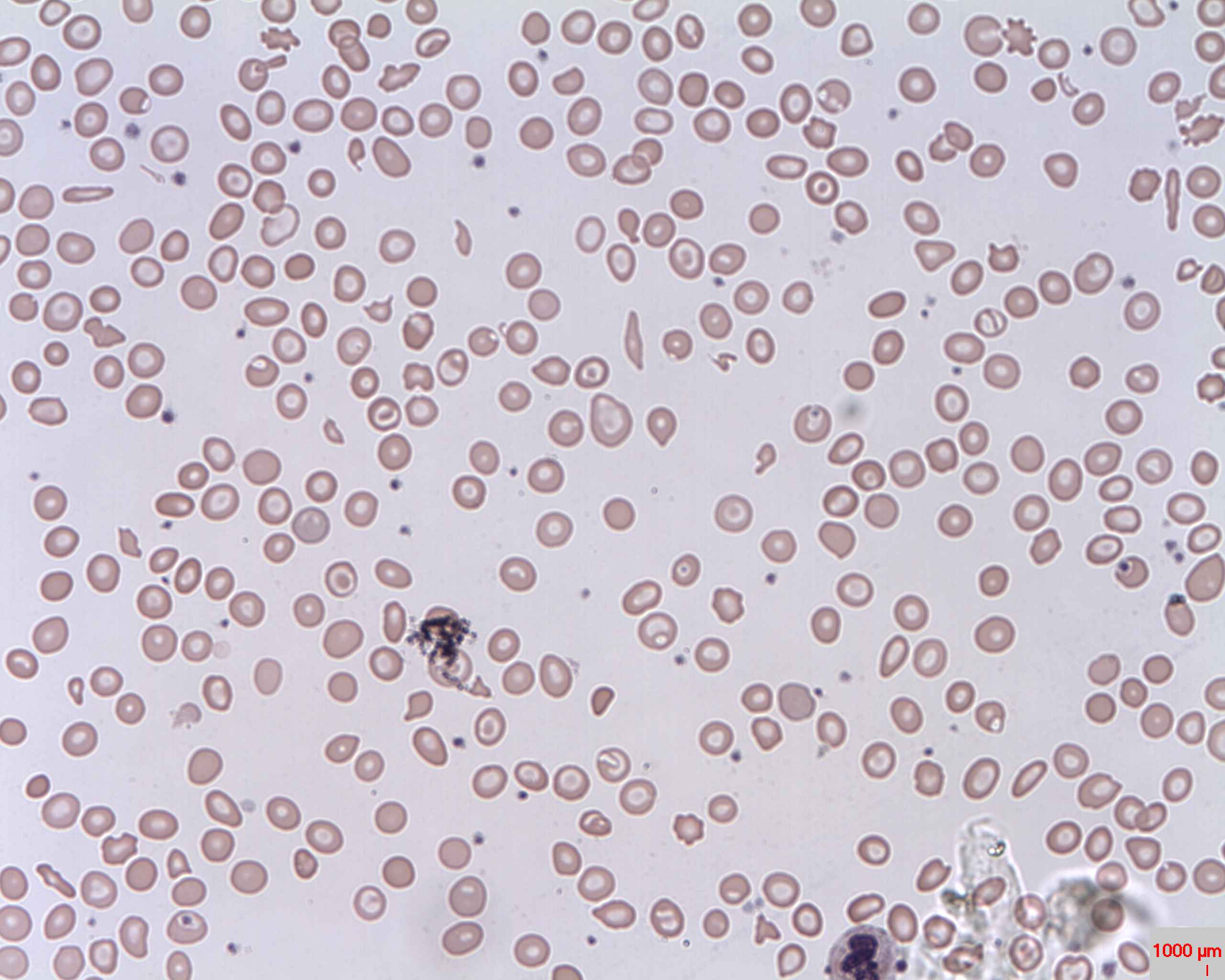Playlist
Show Playlist
Hide Playlist
Alpha Thalassemia: Hemoglobin Electrophoresis
-
Slides Anemia Alpha Beta Thalassemia.pdf
-
Reference List Pathology.pdf
-
Download Lecture Overview
00:01 To begin with, let's take a look at normal hemoglobin electrophoresis. 00:03 Once again, normal. This is the one I recommend, highly recommend, that you memorize. 00:08 Let's begin with an adult, this is hemoglobin A. Here it is. See it? Okay. Here's hemoglobin F, fetus, and he didn't have hemoglobin A2. 00:21 Next, the reason we don't have hemoglobin S, because this has nothing to do with sickle cell. 00:27 What category of anemia am I dealing with? Microcytic. 00:30 When are we going to talk about sickle cell? Good, that will be normocytic hemolytic. 00:35 Not now. Okay. Above that hemoglobin A, look at your globins. 00:40 Huh, alphas and betas, As and Bs. What about above that hemoglobin F? What is that? Gugu gaga. Alright, so, alpha/gamma, apha/gamma, and then you have alphas and deltas. 00:51 Make sure you know your Greek symbols here, it's important. 00:54 Delta for A2, and gamma for F, and beta for A. Let's move on. 00:59 You wanna memorize the percentages, very important. 01:02 You and I, as an adult, and hopefully whatever normal means, but I'm just saying, RBC-wise, normally, we have 97% hemoglobin A, memorize that, the rest of it will make up your 100%. 2%, A2. A2, 2%, if that helps you. 01:17 And then F, we're adults. 01:19 Why do we need fetal hemoglobin, right? By the way, you tell me from physiology, what does fetal hemoglobin do to your oxygen dissociation curve? Good, left shift. I don't have time to go through all that but you should know why it's a left shift in which the affinity of hemoglobin to oxygen is obviously increased. 01:36 You want that, right? As you pass the oxygen from the mother to the fetus to the placenta. 01:40 Fascinating, isn't it? Fascinating. 01:42 Okay, let's take a look at hemoglobin electrophoresis. 01:47 On the left is your normal, we already looked at it, I'm gonna go through that again, versus what you have here with trait. 01:53 Now, you tell me. If you paid attention, then you'll tell me that trait is loss of how many alleles? Good, two. All right? I told you not to confuse silent and trait. 02:02 Next, in -- don't look at this electrophoresis yet, it will confuse you. 02:06 You tell me. Look at me. What we have is the fact that every single hemoglobin that's important for us, it's relevant for us, is losing an alpha. 02:14 So, if every single hemoglobin that's important here, A, A2, and F, are all -- they all contain alpha and they're all missing, two of them, then what happens to all of them proportionately? Oh, yeah, you have a little bit -- you have a lot less of hemoglobin A in proportion to a lot less of hemoglobin A2, in proportion to a lot less of hemoglobin F. 02:36 It's not going to change a percentage. See, this, I can't help you. 02:40 This is just simple math. No, the percentages will be the same. 02:44 Welcome to 97, 2, and 1, but would you please look at the length or the how tall these concentrations are? All are decreased compared to the left in which it's normal. 02:56 See, you got tall buildings on your left, that's normal, the one on the right, the buildings are all small proportionately, therefore hemoglobin electrophoresis proportionately will be decreased and percentages remain the same. 03:09 So, therefore, can you confirm alpha-thalassemia trait with hemoglobin electrophoresis? If the question was asking you, is hemoglobin electrophoresis going to confirm this? Obviously not. It looks normal. 03:22 But if you find the symptoms, what are the symptoms here? Oh, yes, my patient is feeling tired, especially after he or she might be exerting himself, correct? Then you do a hemoglobin electrophoresis, you know your patient is coming from, let's say, far east or far eastern type of descent, then this is only suggestive, definitely not confirmatory. Are we clear? Be careful of that. 03:45 This cannot -- this should remind you, in primary function test, what was it? Primary function test, in which particular disease category would you have a normal or increased FEV1/FVC ratio? Oh, yeah, that was restrictive. Same concept, this is for trait. Let's continue.
About the Lecture
The lecture Alpha Thalassemia: Hemoglobin Electrophoresis by Carlo Raj, MD is from the course Microcytic Anemia – Red Blood Cell Pathology (RBC).
Included Quiz Questions
Hemoglobin A2 is composed of which of the following globin chains?
- 2 α-globin and 2 δ-globin chains
- 2 γ-globin and 2 δ-globin chains
- 2 ß-globin and 2 δ-globin chains
- 2 α-globin and 2 γ-globin chains
- 2 α-globin and 2 ß-globin chains
Which of the following makes up approximately 97% of the total hemoglobin in alpha thalassemia trait?
- Hemoglobin A
- Hemoglobin A2
- Hemoglobin Barts
- Hemoglobin H
- Hemoglobin F
Customer reviews
5,0 of 5 stars
| 5 Stars |
|
1 |
| 4 Stars |
|
0 |
| 3 Stars |
|
0 |
| 2 Stars |
|
0 |
| 1 Star |
|
0 |
excellent explanation of the electrophoresis in thalassaemias. good diagrams. engaging speaker.




